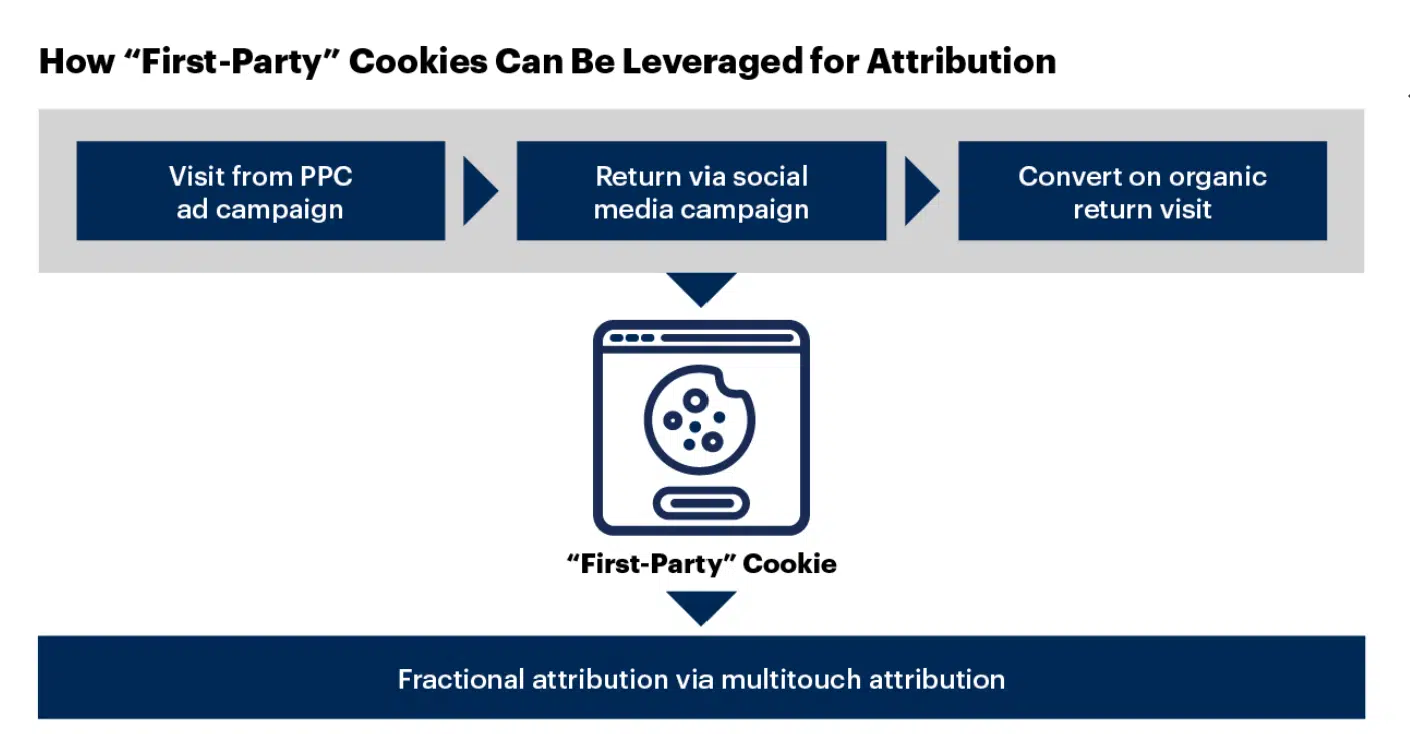We are facing a pivotal moment in how we measure the impact and value of our marketing efforts, no matter how much the deprecation of third-party cookies on the Chrome browser is delayed.
In the inevitable cookieless future, quantifying marketing’s ROI and articulating its value for the organization will require a strategic shift. It’s time to rethink our performance measurement strategies to safeguard budgets and ensure marketing’s worth remains quantifiable.
1. Assess current marketing measurement
Before diving into options that can help maintain insights, leaders must first take the following steps to conduct a marketing measurement audit:
- Identify how and why third-party cookies are used within your marketing practice. Examples of third-party cookie utilization include ad retargeting, tracking pixels to determine how potential customers interact with your content, multitouch attribution and live chat functionalities that look to enhance user experience on your website.
- Determine if your marketing measurement was maintained through an external vendor. If so, ignite a conversation around leveraging new techniques less reliant on third-party cookies. Ask questions such as, “How is third-party cookie deprecation impacting our current measurement products?” and “What do you recommend to ensure the continuity of our current insights and measurement?”
- If your marketing measurement was built internally, investigate how your website sources and uses third-party cookies, posing questions such as “Are we tracking the source of visitors to our site through third-party cookies?” and “Does our attribution methodology use third-party cookies?”
Dig deeper: Google’s cookie deprecation: An essential marketing playbook for the post-cookie era
2. Close the measurement gap with enhanced first-party data collection
Once you’ve fully audited your current attribution methodology, it’s time to explore your methodological options so that insights can be maintained moving forward. You have two courses of action:
- Upgrade your current methodology to limit the impact of third-party cookie deprecation.
- Become less dependent on third-party cookies by diversifying your measurement techniques.
Invest more heavily in first-party data collection. Fine-tune your attribution models to optimize first-party data, focusing on identity resolution as the key to creating a consistent and enhanced customer experience across touchpoints.
Whereas multitouch attribution relies on third-party cookies to track touchpoints relative to a business transaction, identity resolution is centered around first-party data collection and customer identification through deterministic and/or probabilistic means. Obtaining more information about a website visitor will make it easier to link conversion paths based on known first-party interactions.
First-party cookies collect and store interaction history, letting you maintain a fractional attribution model replicating legacy measurement techniques that used third-party cookies.

Dig deeper: 3 future-proofing strategies for Google’s third-party cookie crackdown
3. Tap into new techniques to ensure comprehensive measurement
To offer a complete understanding of marketing impact, you must improve current attribution methods and invest in new measurement approaches.
Given their ability to track how marketing channels work together, marketing mix modeling (MMM) is an ideal measurement approach for B2C organizations, providing a holistic snapshot of your marketing budget, which impacts business outcomes. In addition, MMM can monitor how changes in spend levels affect business performance and quantify the influence of external factors.
In B2B, it makes sense to look beyond MMM due to low transaction volume and a complicated sales process. Focus on utilizing full-life-cycle closed-loop measurement to effectively quantify the impact of marketing strategy and sales interactions.
By taking these steps to implement new methodologies, you can prevent the loss of insights from legacy measurement techniques and ensure your marketing value story remains strong in the face of challenging headwinds.
Dig deeper: Alternatives to third-party cookies: The state of play
Opinions expressed in this article are those of the guest author and not necessarily MarTech. Staff authors are listed here.

